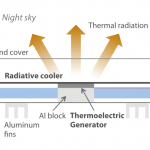“We develop and provide a transparent life cycle inventory of conventional and electric vehicles and apply our inventory to assess conventional and EVs over a range of impact categories. For all scenarios analyzed, the use phase is responsible for the majority of the global warming potential (GWP) impact, either directly through fuel combustion or indirectly during electricity production.”
Total emissions
“When powered by average European electricity, EVs are found to reduce GWP by 20% to 24% compared to gasoline ICEVs and by 10% to 14% relative to diesel internal combustion engine vehicles (ICEVs) under the base case assumption of a 150,000 km vehicle lifetime. When powered by electricity from natural gas, we estimate EVs offer a reduction in GHG emissions of 12% compared to gasoline ICEVs, and break even with diesel ICEVs. EVs powered by coal electricity are expected to cause an increase in GWP of 17% to 27% compared with diesel and gasoline ICEVs. Wind power electricity would allow electric transportation with life cycle carbon footprints as low as 106 g CO2-eq/km.”
Vehicle production: Manufacturing one electric car takes as much energy as manufacturing two conventional automobiles
“In contrast with ICEVs, almost half of an EV’s life cycle GWP is associated with its production. We estimate the GWP from EV production to be 87 to 95 grams carbon dioxide equivalent per kilometer (g CO2-eq/km), which is roughly twice the 43 g CO2-eq/km associated with ICEV production. Battery production contributes 35% to 41% of the EV production phase GWP, whereas the electric engine contributes 7% to 8%. Other powertrain components, notably inverters and the passive battery cooling system with their high aluminum content, contribute 16% to 18% of the embodied GWP of EVs.”
“Comparative Environmental Life Cycle Assessment of Conventional and Electric Vehicles“, Troy R. Hawkins, Bhawna Singh, Guillaume Majeau-Bettez, Anders Hammer Strømman, in “Journal of Industrial Ecology”, October 2012. Via the BBC and Treehugger. Picture: Trexa. Previously: The status quo of electric cars: better batteries, same range.





